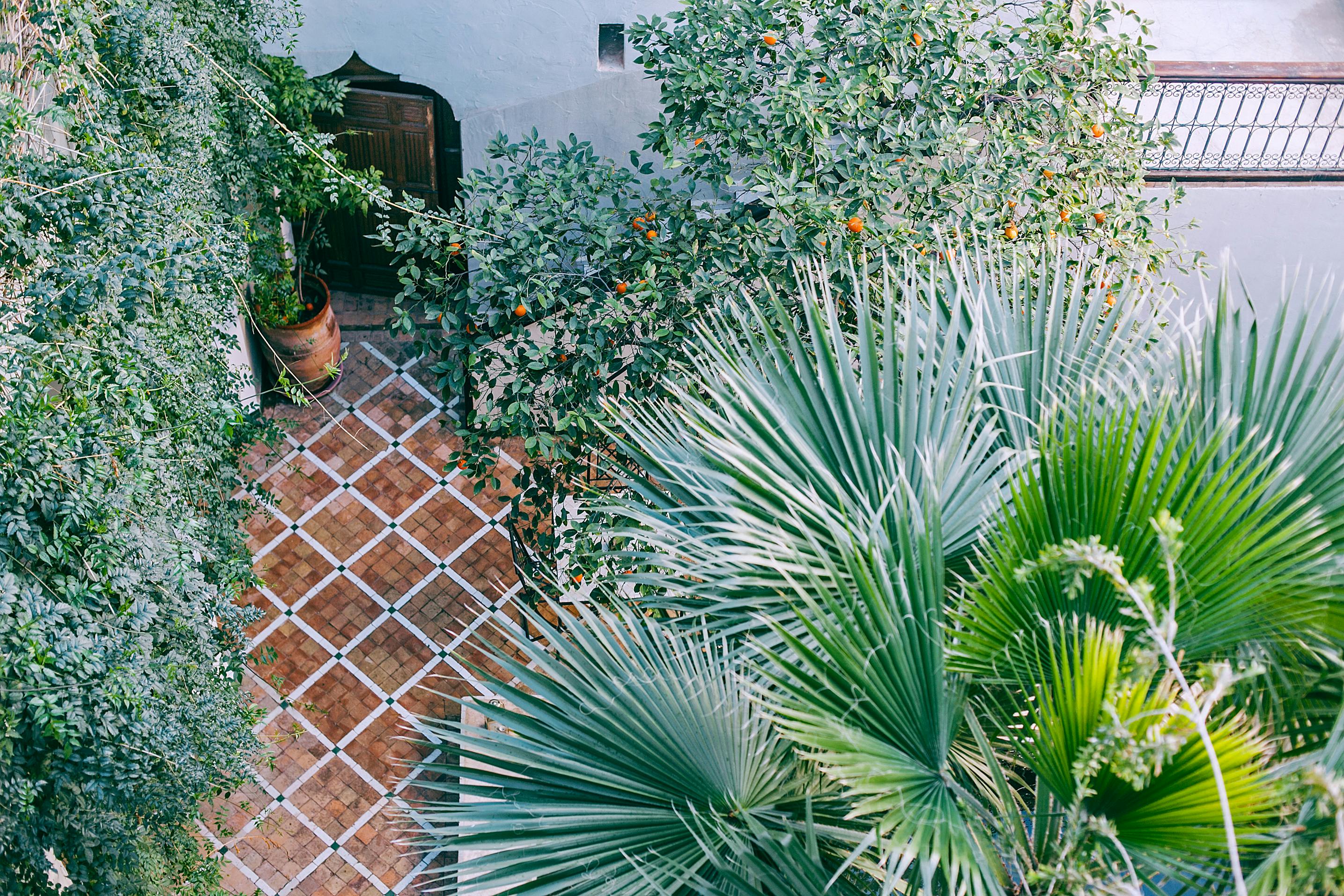Plum trees are popular fruit trees that can be found in many backyards. They can produce delicious plums that are great for eating, cooking, and preserving. But how long does it take for plum trees to bear fruit? This article will answer this question and provide helpful tips on how to get your plum tree to produce fruit as soon as possible.It typically takes 3-5 years for a plum tree to bear fruit. However, the exact time frame depends on the variety of plum tree, its growth conditions, and the climate in which it is grown.
What Factors Affect the Time it Takes for Plum Trees to Bear Fruit?
When it comes to growing plums, there are a number of factors that can influence how long it takes for a plum tree to bear fruit. The age and variety of the tree are two of the most important factors, as well as the climate, soil type, and overall growing conditions.
The age of a plum tree is one of the main factors that determine how quickly it will produce fruit. Generally speaking, a young tree will take longer to produce fruit than an older one. In general, a mature plum tree will be able to produce its first crop within two or three years. On the other hand, younger trees may take up to five or six years before they begin producing full crops.
The variety of plum tree is another factor that affects how long it takes for a tree to bear fruit. Different varieties of plums ripen at different times throughout the season and some varieties require more care and attention than others in order to produce good yields. For example, Japanese plums usually require more maintenance than European plums and may take longer to bear fruit.
The climate is another factor that can influence how long it takes for a plum tree to bear fruit. Plums thrive in climates with hot summer days and cool nights, so if you live in an area with extreme temperatures or wide temperature fluctuations during the day or night, your plums may take longer to mature and ripen properly.
Soil type is also an important factor when considering how long it will take for your plum tree to bear fruit. Plums prefer soil that is fertile and well-drained, so if your soil has poor drainage or nutrient deficiencies, your plums may take longer to ripen properly and yield good crops.
Finally, overall growing conditions can also affect how quickly a plum tree produces fruit. If you provide your trees with adequate water and sunlight throughout the growing season they will be better able to produce good yields in less time than if they had been neglected or subjected to harsh conditions such as drought or extreme heat or cold temperatures.
Overall, there are many factors that can affect how long it takes for a plum tree to bear fruit including age, variety, climate, soil type and overall growing conditions. By taking all these factors into consideration when planting your trees you will be able to ensure that they reach their full potential in terms of production time and yield quality.
When is the Best Time to Plant Plum Trees?
Plum trees are a great addition to any garden, providing plenty of sweet and juicy fruit for you to enjoy. But when is the best time to plant plum trees? The answer depends on where you live and what type of plum tree you want to grow.
In general, most deciduous fruit trees should be planted in late winter or early spring, when the soil is still cool but there is no danger of frost. This gives the roots time to establish themselves before summer arrives and the tree needs more water. In areas with mild winters, plum trees can be planted in fall as well.
If you live in a climate with hot summers, it’s best to wait until temperatures start cooling off before planting your plum tree. Late summer or early autumn is usually the ideal time for this type of climate. This gives the tree enough time to establish itself without having to endure too much heat or drought during its first growing season.
When choosing a variety of plum tree, consider your local climate and soil conditions. Some trees are more adaptable than others and may fare better in certain areas than others. Make sure to choose a variety that will thrive in your area so that you can enjoy a good harvest year after year.
Planting new fruit trees can be an exciting project, but it’s important that you do it at the right time so that your tree will have every chance of success. Generally speaking, late winter or early spring are the best times for planting most types of plum trees, although in some climates they may also be planted in late summer or early autumn for optimal results. Choose a variety suited for your local climate and soil conditions and give your new tree plenty of love and attention – with luck you’ll soon have plenty of delicious plums!
Types of Plum Trees
There are several types of plum trees that can be grown, each with its own benefits and drawbacks when it comes to bearing fruit. European plums, Japanese plums, and American plums are the most popular varieties for home gardeners. European plums are earlier-ripening and tend to grow in cooler climates. Japanese plums are sweeter and more flavorful than their European cousins, but require warmer temperatures to produce a good crop. American plums are hardy and disease-resistant, making them a good choice for most areas of the country.
European Plums
European plums produce large fruits that ripen early in the season. Most varieties will start producing fruit within two years of being planted, although some may take up to five years before they reach full production. European plums prefer cooler climates and can be prone to diseases such as brown rot if not properly managed. They do best in well-drained soils with plenty of sun exposure.
Japanese Plums
Japanese plums have a sweet flavor that is often preferred by many home gardeners over their European counterparts. They require warm growing conditions to produce an abundance of fruit and generally need at least 6 hours of sun exposure each day to thrive. Japanese plums tend to bloom late in the season and may require pollination from other plum varieties in order to bear fruit successfully.
American Plums
American plums are known for their hardiness and disease resistance, which makes them ideal for many parts of the country where other plum varieties may struggle to survive or produce well. American plums can tolerate cold winters as well as hot summers, however they do need plenty of sun exposure in order to reach peak production levels. The fruits produced by American plum trees tend to be smaller than those produced by other varieties, but still have a sweet flavor that is much appreciated by many home gardeners.
Pruning Your Plum Tree
Pruning your plum tree is an important part of maintaining a healthy and productive tree. Proper pruning helps to ensure that the tree will have plenty of fruit, as well as providing it with the proper shape and structure for years of growth. Knowing how often to prune your plum tree is essential for its health and productivity. Generally, pruning should be done in early spring or late winter, when the tree is dormant. Pruning at this time will help to prevent disease and ensure that the tree’s natural growth cycle is maintained.
When pruning your plum tree, it’s important to remove any dead or diseased branches as soon as possible. This will help keep your tree healthy and free from diseases that could cause serious damage in the future. Additionally, removing weak or overcrowded branches can help improve air circulation, which can help prevent fungal infections from taking hold.
It’s also important to remove any water sprouts, which are shoots that typically form near the base of a branch or trunk. These can sap energy from other parts of the tree and should be removed in order to encourage more productive growth elsewhere. Finally, pruning should also be done to maintain a desirable shape and size for your plum tree; this will help ensure that it produces plenty of fruit each season.
In general, you should aim to prune your plum tree at least once a year. If you live in an area with mild winters or warm summers, you may need to prune more frequently in order to keep up with the rapid growth of your plum tree. Additionally, if you notice any signs of disease or damage on your tree, you should consider pruning immediately in order to prevent further damage from occurring. With regular care and maintenance, you can ensure that your plum tree remains healthy and productive for years to come!

Ideal Conditions for Growing a Healthy Plum Tree
Plum trees are hardy and can thrive in a variety of climates and soil types. However, for the healthiest, most productive tree, there are some ideal conditions that should be met. The location should receive ample sunlight during the day, preferably at least 8 hours of direct sunlight for optimal fruit production. The soil should be well-draining and rich in organic matter, with a pH level between 6.0 and 7.0. It is important to water the tree regularly, especially during periods of drought or extreme heat to ensure that the tree does not become stressed. Mulching around the base of the tree can help retain moisture and suppress weeds while providing additional nutrients to the soil. Pruning is also important for maintaining a healthy plum tree; it should be done in late winter or early spring before new growth begins to develop. Additionally, regular fertilization with an organic fertilizer will help promote healthy growth and fruit production.
In addition to providing ideal growing conditions, it is essential to select a plum variety that is suitable for your location’s climate and soil type. For example, some plum varieties have later blooming times which may make them more vulnerable to late spring frosts in certain areas; selecting an early blooming variety can reduce risks of frost damage. Additionally, some varieties require another compatible variety nearby in order to produce fruit; make sure you select varieties that are compatible with each other if cross-pollination is necessary.
By taking into consideration all these factors when selecting and planting a plum tree, you can ensure that your tree grows into a healthy, productive specimen that will provide you with delicious fruit for many years to come!
What Kind of Soil is Best for Growing a Plum Tree?
Plum trees require well-draining soil with a pH between 6.0 and 7.0 for optimal growth. The soil should also be high in organic matter, such as compost or aged manure, to promote healthy root development and good fruit production. Sandy loams are the best type of soil for plum trees because they provide good drainage and aeration while still allowing the tree to obtain necessary nutrients. Clay soils can also be used, but they must be amended with organic matter to increase drainage and make sure that nutrients are available for the tree.
In addition to these basic requirements, plum trees do best in soil that is slightly acidic or neutral in nature. Soil tests can help determine the pH of your soil and provide recommendations on how to adjust it if needed. When planting a plum tree, it is important to incorporate plenty of organic matter into the existing soil at planting time and then continue adding it regularly throughout the growing season. This will ensure that the roots have access to all the nutrients they need for healthy growth, while also helping to retain moisture and reduce weeds.
Overall, when choosing a site for a plum tree it is important to consider not only the type of soil but also its fertility level and pH balance. Providing your tree with well-draining, nutrient-rich soil will ensure that it grows strong and produces an abundant crop of delicious plums each year!
How Much Water Does a Plum Tree Need to Produce Fruit?
Plum trees require sufficient water to produce a full crop of fruit each season. A mature plum tree needs to be watered deeply and regularly in order to ensure that it has enough moisture throughout the growing season. The amount of water needed will vary depending on various factors, such as the climate, the type of soil, and how much rain falls during the growing season. Generally, a mature plum tree should be given about one inch of water per week during the growing season. This can be accomplished by using a soaker hose or drip irrigation system. If there is heavy rainfall during the growing season then supplemental watering may not be necessary.
It is important to note that young plum trees need even more water than mature trees in order to ensure their healthy development and fruit production. Young trees should be watered about twice as often as mature trees and given up to two inches of water per week. The best way to determine how much water a plum tree needs is to monitor soil moisture levels frequently throughout the growing season. If the soil feels dry then it may be necessary to provide additional watering.

Conclusion
Plum trees can take several years to bear fruit, depending on the variety and the environment. Most plum trees start producing fruit within three to four years after planting, but it can take five to seven years in some cases. Additionally, the amount of fruit produced in a given year depends on environmental conditions such as sunlight, soil fertility, and humidity. Pruning and fertilizing may also help speed up the process of bearing fruit. The best way to ensure that your plum tree produces a good crop is to provide it with proper care and optimal growing conditions.
No matter what type of plum tree you choose or how long it takes for the tree to bear fruit, you will be rewarded with sweet, delicious plums that are well worth the wait!



